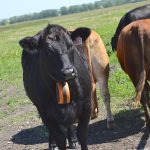TORONTO (Thomson Reuters Foundation) — One-third of the world’s arable land has been lost to soil erosion or pollution in the last 40 years, scientists said in recently published research.
Preserving topsoil is crucial for feeding a growing population, they added.
It takes about 500 years to generate one inch of topsoil under normal agricultural conditions, and soil loss has accelerated as demand for food rises, biologists from Britain’s Sheffield University said in the report.
“Soil is lost rapidly but replaced over millennia, and this represents one of the greatest global threats to agriculture,” said biology professor Duncan Cameron.
Read Also

Why feds imposed EV tariffs
Moe and Kinew have a fight on their hands when it comes to eliminating the EV tariff. Canada has to worry about pissing off the U.S. and Mexico and hundreds of thousands of auto workers.
He recommended that farmers engage in “conservation agriculture,” in which crops are rotated more frequently, organic matter is restored to the soil and less energy is spent on nitrogen fertilizer.
Intensive farming maintains crop yields through the heavy use of fertilizers, made by an industrial process that consumes five percent of the world’s natural gas production and two percent of the world’s annual energy supply, the report said.
French officials recently launched a plan to raise soil carbon levels to take carbon dioxide out of the atmosphere.
The plan, backed by the United Nations’ Food and Agriculture Organization, aims to increase soil carbon stocks by .4 percent a year to boost soil fertility while combating global warming.














